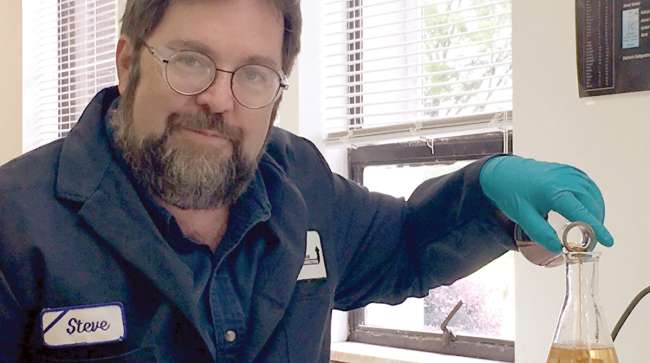Contributing Writer
Engine Maker Cummins Endorses Fuel Additives Amid Tighter Emissions Regulations

Cummins Inc. recently endorsed two fuel additives, marking the first time the diesel engine maker has taken such a step.
The original equipment manufacturer’s move reflects an evolution of fuel additives in recent years as tighter emission regulations and market realities have forced engine makers to continually update their designs.
Cummins’ endorsement came after extensive testing, the company said in May. Power Service’s Diesel Kleen +Cetane Boost cleans dirty injectors and prevents sticking, smooths rough performing engines and improves fuel economy, according to Cummins. Also recommended is Power Service’s Diesel Fuel Supplement +Cetane Boost when temperatures drop below 30 degrees Fahrenheit. This prevents the paraffin in ultra-low-sulfur diesel fuel from gelling.
The trucking industry has a long history with fuel additives. After suppliers claimed performance benefits that also were accompanied by negative effects, American Trucking Associations’ Technology & Maintenance Council developed recommended practices in 1981 that were updated in 2014.
Cummins declined to comment for this story, and Power Service did not respond to requests for comment.
Jason Martin, manager of fuel-injection systems, NAFTA, for Daimler Trucks North America, said the company recommends additives for cold-weather performance, though fuel should be tested before and after use as a cold flow improver or de-icer to ensure it actually lowers the cold filter plugging point. Blend rates vary, and overdosing can cause more filter plugging, Martin said.
Diesel fuel is additized before it is delivered to the customer or retailer, meaning later additives are “technically redundant in function,” Martin said.
A better solution is simply purchasing better fuel.
Reputable companies will test the fuel at no cost and then sell an additive only when needed, Martin said. He also said fleets should “walk away” from salespeople who won’t test the fuel before the sale or who claim the additive will increase mileage by a certain percentage.
Steve Muth, chief chemist for Penray, which offers 11 categories of fuel additives, said the industrywide switch to ultra-low-sulfur diesel forced changes because removing the sulfur decreased the fuel’s lubricity. It was followed by the introduction of common-rail injection systems with smaller injectors that reduced tolerances and required cleaner fuels.
Recent designs have required additives that eliminate water, which leaves deposits that plug up the injectors. Muth said Penray offers a standard anti-gel and a specific biodiesel treatment for when customers don’t know the fuel’s quality.
TMC Executive Director Robert Braswell said the rapid and constant changes in engine designs require fleets to keep up with the times.
“What you find is a lot of people are operating and they say, ‘Oh, well, you know, we’ve always used XYZ in our fleet.’ And then you’ve got to think, ‘Well, can I still do that?’ Technology has changed,” he said.
The good news is that additives dealers can respond quickly to changes in the marketplace.
David Naus, an independent distributor of Amsoil products in Illinois, said a producer such as Amsoil can create a blend that fits new engines “within several months or less.”
A major reason for fuel additives is to prevent plugging in cold weather, which can be challenging when a load is traveling north from the warmer southern United States, where no additive is needed.
DTNA’s Martin said that when fleets do use additives, they should be blended correctly — ideally before they are delivered, and if not, by splash blending in the delivery truck. If not there, Martin recommends splash blending in the bulk dispensing tanks or, as a last resort, the truck fuel tanks.
When the additive is splash-blended, Martin recommends pouring in the additive before adding the fuel. Otherwise, the additive will sink to the bottom, potentially resulting in the engine consuming a large quantity of unblended additive.
Preventing microbial growth is another reason to use fuel additives.
Kenneth Calhoun, vice president of customer relations with the Truck Centers of Arkansas dealership, and who is chairman of TMC study groups, said biocides sometimes are necessary when water collects at the bottom of a storage tank, creating an environment conducive to bacteria growth.

Kenneth Calhoun, vice president of customer relations with the Truck Centers of Arkansas dealership. (Truck Centers of Arkansas)
Calhoun emphasized that additives should be targeted to specific issues. Using them simply for fuel economy won’t produce enough improvements to pay for the products.
“There are no magic formulas out there that are going to turn your world around and improve your fuel economy,” he said. “I think that if those things were readily available, the manufacturers would have latched on to them a long time ago since, ultimately, fuel economy is what sells trucks and engines.”
Fleets should ask vendors questions such as whether the additive will increase the cetane number, which measures the fuel’s ignition quality and speed at which it burns, Braswell said. The higher the cetane number, the more likely the engine will start better. Fleets also should ask if the additive will add to the fuel’s ash content, which should be no more than 100 parts per million to prevent ring and piston groove wear.
Other concerns are vapor pressure, viscosity and compatibility with biodiesel blends. Additives with gasoline or other hydrocarbons can create safety issues and damage the engine, Braswell said. The wrong additive even can void the warranty, he said.
“There are always concerns about the performance as promised, and one of the reasons we came up with these recommended practices is to evaluate the manufacturer to see if it’s going to do what they say it’s going to do,” Braswell said. “Let’s just say, ‘Trust but verify,’ right?”




